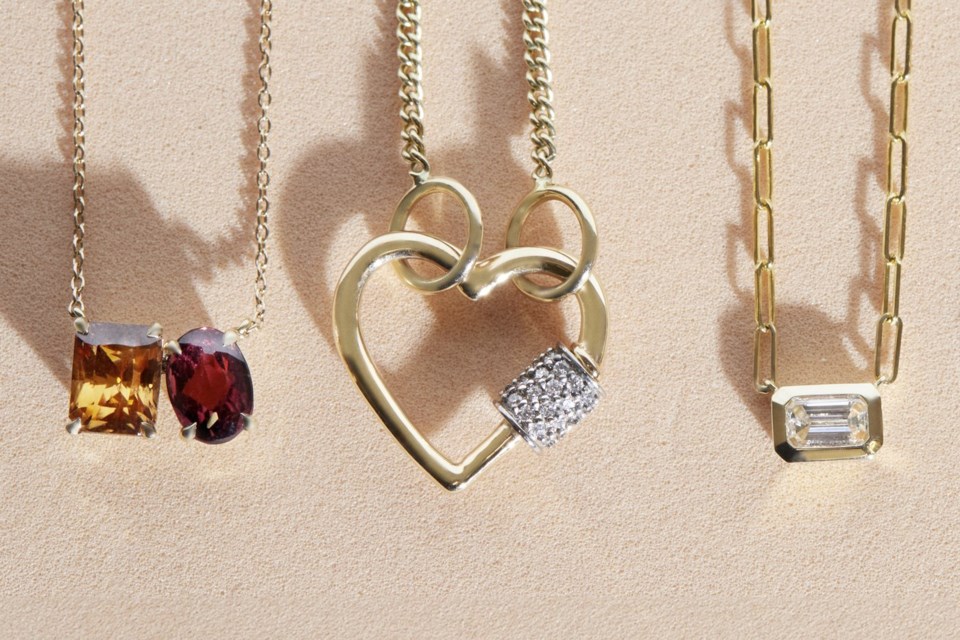Jewelry can sparkle like it’s invincible, but treat it roughly and even the hardest baubles may break.
Whether it’s gemstones, metals or a family heirloom, a piece's shine can fade and its value diminish over time if it isn't cared for properly — a particular risk as the value of gold surges and people look to cash in on their jewelry or acquire new pieces as investments.
“Jewelry is similar to cars,” said Heather White, a jewelry designer, metalsmith and professor at the Massachusetts College of Art and Design in Boston. “Both require constant maintenance and special storage.”
Leave your earrings on the bedside table? Easy to lose. Take your ring off to wash your hands? It could slip down the drain. Toss everything into a single catch-all? You’re almost guaranteed tangles or scratches.
Know what you have
There’s no one-size-fits-all approach to jewelry care, because not all pieces are made — or worn — the same. Think about where a piece sits on the body and how much surface contact it gets. A ring, for example, experiences much more daily wear than a brooch.
The care a piece requires depends on what it’s made of, where it’s worn, its age and its delicacy, among other factors.
“One of the most important things to know is what type of jewelry you have, because not all care is universal,” said Amanda Gizzi, spokesperson for Jewelers of America, a nonprofit trade association based in New York City.
When you're buying jewelry, a reputable jeweler can offer care instructions tailored to each piece. And if you’re unsure, be sure to ask.
Even basic at-home cleaning can breathe life back into a long-loved piece. No fancy products required —just a lukewarm water bath with a drop of mild dish soap, like Dawn, which contains surfactants to break down grime. A soft, clean toothbrush can help loosen dirt. You’ll see the residue left behind in the water.
Gizzi adds that a spritz of Windex — also containing surfactants — can work, too. Avoid anything with bleach, and steer clear of abrasive cleaners. A non-abrasive toothpaste might do the trick for harder stones, but never use it on delicate gems like pearls or opals.
Silver, gold and other metals
Metal jewelry tends to be durable, but knowing the specific metal and how it’s made matters.
Sterling silver, for instance, tarnishes easily — especially if it’s not worn often or if you live in a home with a gas stove. “When a gas stove is lit, it releases trace amounts of sulfur gas,” said White. “It’s harmless to people, but over time it will tarnish silver.”
Gold can generally be worn in the shower, as long as the piece isn't gold-plated. Plated gold involves a thin layer of gold electroplated onto another metal, and that layer can wear off with friction or exposure to soaps and chemicals.
And whatever the metal, store pieces separately. “If two pieces of metal rub against each other, it increases surface scratches,” said Emily Cobb, jewelry designer, metalsmith and instructor at Massachusetts College of Art and Design.
Diamonds, pearls and other stones
Gemstone care varies widely depending on hardness. The Mohs scale — a tool used by gemologists —measures a mineral’s resistance to scratching, from talc at 1 to diamond at 10.
Diamonds, rubies, sapphires and emeralds are considered hard stones and fairly durable. Even so, jewelry with gemstones should have its settings inspected every few years to avoid losing a stone due to a loose prong.
Softer stones like pearls and opals require more delicate treatment. Avoid applying hairspray, perfume or lotion when wearing them. Pearls should be restrung every few years, while opals should be kept out of direct sunlight, which can alter their color.
“Body lotion and soaps can build up in a gemstone’s setting,” said Cobb. “It can get caked in and dull the shine. A simple cleaning goes a long way — and if at all possible, take off your jewelry before the shower.”
Keep watches ticking
Luxury watches require regular servicing, but make sure you know what’s covered in your warranty. Taking your watch to an uncertified technician can void it.
Also, avoid exposing watches to magnets, which can interfere with internal components and cause them to stick or stop. To clean, use a damp cloth to gently wipe the band.
Store necklaces separately
Necklaces, meanwhile, need thoughtful storage.
“Necklaces should ideally be stored separately,” said Simone Paasche, creative director at Spur Jewelry, a New York–based company that redesigns heirloom pieces.
“If they are stored individually and will remain stationary, they do not need to be stretched out,” she said. “Many jewelry boxes have little hooks, which are great.”
Layered looks — dubbed “neckmess” on social media — are popular, but when removing them, do so one at a time to avoid tangles. And always close the clasp before putting a necklace away, said Jennifer Gandia, co-owner of Greenwich St. Jewelers in New York City.
“This reduces the chance of knots or tangling with another necklace,” she said.
Need to store one on the go? A plastic zipper bag will do in a pinch. Just don’t wrap it in a tissue.
“You might forget and throw it away,” Gandia said.
Tracee M. Herbaugh, The Associated Press




